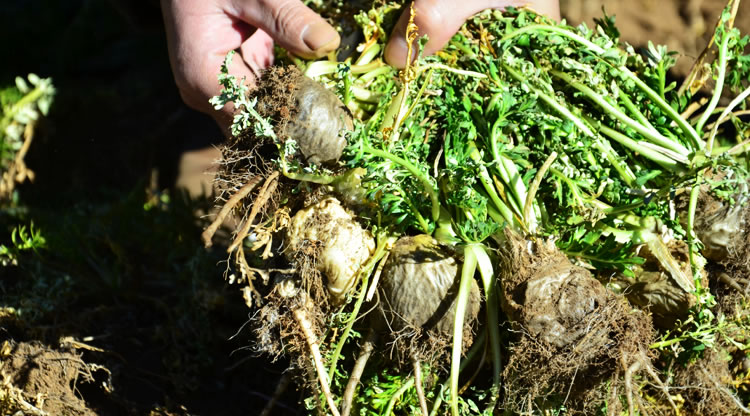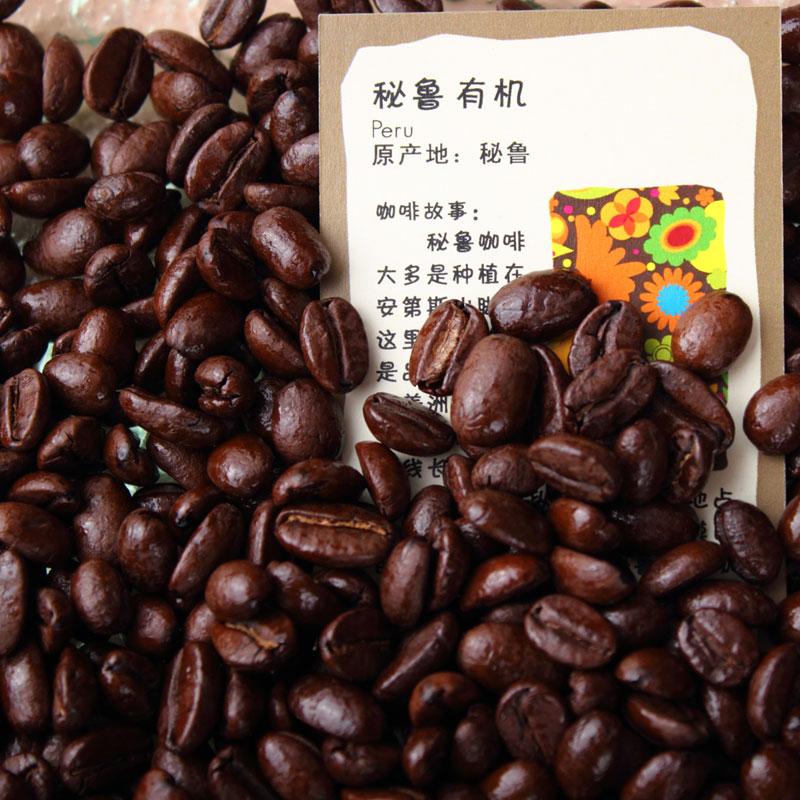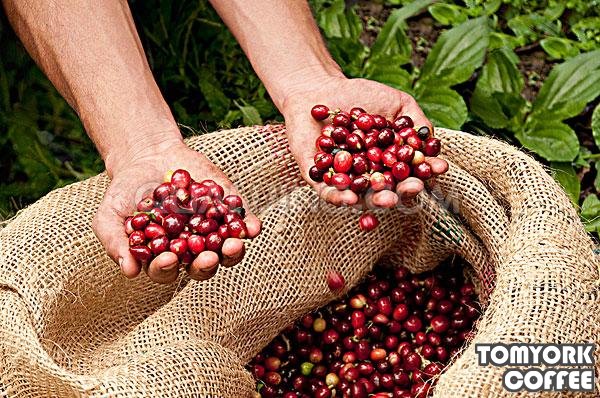Peru to buy coffee strategy Peruvian Macca how much to eat Peruvian Maka what is the function of Macca coffee
Peruvian Coffee, a rising star in the coffee industry
As a rising star in the coffee industry, Peruvian coffee is gradually opening up its popularity and entering the international market. Peruvian coffee has always been used as one of the stable and mellow mixed beans of comprehensive coffee. Peruvian coffee has a mellow taste and the right acidity, and this lukewarm coffee attitude has made more and more people like it.
Peru is located in western South America, with a coastline of 2254 kilometers. The Andes runs from north to south, and the mountains account for 1% of the country's area. it belongs to the tropical desert region with a dry and mild climate. Peruvian coffee is mostly grown at the foot of the Andes, where it is rich in traditional Central American top coffee beans. Peru has rich natural landscapes including tropical rain forests, unique hills and mountains and the driest deserts. Coffee is grown along the eastern side of the Andes at a height of 1300 to 1850 meters. Excellent Peruvian coffee grows at high altitudes in the Andes, reaching a maximum of 2000 meters.
Up to 98% of Peruvian coffee is grown in forest areas, and most of the producers are small farmers:
Peru's finest coffee is produced in Chanchmayo, Cuzco, Norte and Puno. It is most famous for the coffee beans produced in Chaximayo in the middle and Cusco in the south. Most Peruvian coffee is grown under natural conditions and produces characteristic organic coffee. Organic coffee is made of beans grown in the shade of trees. Coffee grown under natural conditions costs 10% more than others. Judging from poverty, farmers may not have the money to buy chemical fertilizers and pesticides, but it is really difficult to confirm all the coffee. Although the yield of coffee beans is not high because of the method of planting in the shade, its quality can reach the level of gourmet coffee. This is because shading trees can slow down the ripening of coffee trees, help coffee grow fully, make it contain more natural ingredients, breed better flavors, and reduce caffeine content.
Peruvian coffee market:
Peru has good economic conditions and a stable political situation, thus ensuring the good quality of coffee. In the mid-1970s, Peruvian coffee production was about 900000 bags a year, and then steadily increased to about 1.3 million bags a year. Although private exporters buy coffee in remote areas through middlemen, the main market is still monopolized by the government. Later, the private Peruvian Coffee exporters Association was established, which is committed to improving the quality of coffee, and its primary task is to set standards and eliminate inferior products, so as to create an atmosphere of quality supremacy. This positive move heralds a bright future for the coffee industry. Since then, rising prices have encouraged farmers to actively grow coffee rather than cocoa, the region's traditional cash crop.
In general, these coffee beans have the gloss of Central America, but they are all packaged in South American flavor. High-quality organic venues do have more rural coffee characteristics. As long as these coffee beans continue to add interesting flavors rather than weaken them. Such a cup of Peruvian coffee has all the bright and deep tastes. When a cup of ordinary Peruvian coffee is in your hand, you don't have to try to taste whether it is good or not.
Peruvian coffee is grown in a planned way, which has greatly increased coffee production. Its rich acidity and mellow smoothness are its most prominent features. Peruvian coffee has a soft sour taste, medium texture, good taste and aroma, and is an indispensable ingredient in the production of comprehensive coffee. High-quality Peruvian coffee, with strong aroma, smooth, layered, rich sweet, elegant and mild sour taste, will quietly awaken your taste buds.
Compared with high-quality organic Peruvian coffee, the difference between ordinary organic Peruvian coffee and high-quality organic Peruvian coffee is huge: relatively cheap beans are not only poor in quality, but often have obvious defects in the cup. Especially the grass flavor, overfermented flavor. It takes a lot of work to find good Peruvian coffee beans among a lot of middlemen or other people who can buy them. However, it also takes a lot of hard work to pick sample beans. But that must be better than working hard in piles of papers.
Peruvian Macca coffee
Peruvian macacoffee is a coffee beverage made of macaramide extract of Peruvian natural herbs, okra, Brazilian high-grade coffee beans, high-grade cream and so on.
In 2001, American researchers analyzed the effective ingredients of Maca from Maca and named them macadene and macaamide, which can regulate the secretion of human hormones, improve immunity and tonify the kidney. So Maca is suitable for men and women.
Maca growing environment
Marca, Peru is a plant growing on a plateau more than 4,000 meters above sea level in the Peruvian Andes of South America. The climate there is changeable, and there is a great temperature difference between day and night. There is not only no fertilizer, but also a great shortage of basic oxygen. To survive in such a harsh environment, it is necessary to be able to store a huge amount of energy, so Maka has a great need for the absorption of land nutrients, absorbing the aura of heaven and earth on the world's stop, pollution-free plateau. Concentrate the essence of the earth in one. Maka can be said to be the magic of nature. Maka has been regarded by the Incas as a gift from the Andean gods for thousands of years.
The yield of Maca is very low, it is planted every seven years, and the World Health Organization lists it as a rare plant in the world.
Maca came to China
The growth environment is very strict, and now only Peru and Lijiang can be planted in the world. Lijiang relies on the unique natural environmental resources of the high-altitude snow-capped mountain physiognomy and climate, and after the Ministry of Health officially included Maca in the category of new resource food in 2011, the Maca industry in Lijiang, Yunnan Province has realized the introduction of Maca products and large-scale standardized species. Good Yunnan Lijiang Maca has begun to be exported abroad.
Maka is rich in high-unit nutrients, which has the function of nourishing and strengthening the human body. People who have eaten it will be full of physical energy, energetic and will not feel tired. Highly sought after by health care workers, many consumers are scrambling to buy, resulting in the scene that "one card is difficult to get". Because of this situation, there are some on the market.
Counterfeit products concocted by illegal means use inferior Marcas to copy Marcas from Peru.
Indeed, after Maca is added to the coffee, Maca can quickly replenish energy to make up for the physical energy consumed by staying up late, which will not affect the normal work during the day, and for those who stay up late to play and watch football, it's a very healthy drink.
However, the main raw materials of Maca coffee: Maca extract, coffee powder, plant fat powder, not Maca + Peruvian coffee, master the difference between Peruvian coffee and Macca coffee, and then say goodbye to being deceived!
I think it's better to drink real Peruvian coffee.
Recommended item: [PeruFTOSOLYCAFE]
[country]: Peru
[producing area]: Kahamaka
[altitude]: 1800-2000 m
[treatment]: washing
[variety]: Tibika, Kaddura, Bourbon, Kaduai
[producer]: sunshine Cooperative
[flavor]: nuts, caramel, cream

Important Notice :
前街咖啡 FrontStreet Coffee has moved to new addredd:
FrontStreet Coffee Address: 315,Donghua East Road,GuangZhou
Tel:020 38364473
- Prev

Peruvian Coffee Brand Family Coffee how much is a catty of Peruvian Coffee how to make individual Coffee by hand
The rising star of the coffee industry, Peruvian coffee as a rising star of the coffee industry, Peruvian coffee is gradually opening up its popularity and entering the international market. Peruvian coffee has always been used as one of the stable and mellow mixed beans of comprehensive coffee. Peruvian coffee has a mellow taste and the right acidity, and this lukewarm coffee attitude has made more and more people like it. Peru lies in the west of South America
- Next

Which country has the best coffee? How much is Maca Coffee? How much is Maca Coffee? How much is Maca Coffee?
As a rising star in the coffee industry, Peruvian coffee is gradually opening up its popularity and entering the international market. Peruvian coffee has always been used as one of the blend beans for comprehensive coffee stability. Peruvian coffee tastes mellow and has the right acidity. This tepid coffee attitude has made more and more people like it. Peru is located in the west of South America.
Related
- Does Rose Summer choose Blue, Green or Red? Detailed explanation of Rose Summer Coffee plots and Classification in Panamanian Jade Manor
- What is the difference between the origin, producing area, processing plant, cooperative and manor of coffee beans?
- How fine does the espresso powder fit? how to grind the espresso?
- Sca coffee roasting degree color card coffee roasting degree 8 roasting color values what do you mean?
- The practice of lattes: how to make lattes at home
- Introduction to Indonesian Fine Coffee beans-- Java Coffee producing area of Indonesian Arabica Coffee
- How much will the flavor of light and medium roasted rose summer be expressed? What baking level is rose summer suitable for?
- Introduction to the characteristics of washing, sun-drying or wet-planing coffee commonly used in Mantenin, Indonesia
- Price characteristics of Arabica Coffee Bean Starbucks introduction to Manning Coffee Bean Taste producing area Variety Manor
- What is the authentic Yega flavor? What are the flavor characteristics of the really excellent Yejasuffi coffee beans?

